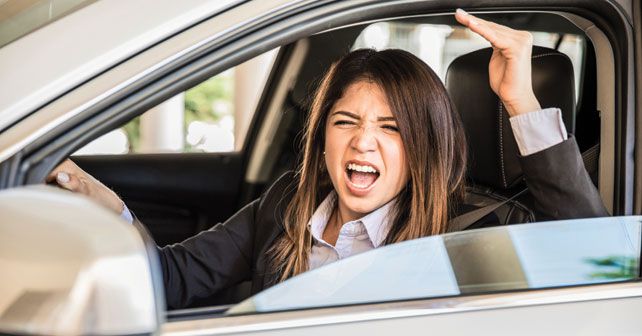
Escape road rage – the AAUI President tells you how.
Road rage has no definition. It is, in fact, a criminal act that has its origins rooted elsewhere – not in traffic. It’s an impulsive reaction that results in aggression – in this case on the road, but it could be anywhere for that matter. The intensity of this impulsive reaction may vary depending on the situation – but, on the whole, scientists define road rage as intermittent explosive disorder, which results in out of proportion outbursts that may involve throwing or breaking objects and even physical assault!
Delhi has witnessed a number of road rage incidents off late. To be honest, road rage is a problem that’s making headlines across the globe. In fact, it’s not a new problem. Road rage was first noticed, and put into print, 40 years ago in England. Some people claim traffic congestion is the primary cause that leads to acts of road rage. Some think that speeding, tailgating, flashing lights, yelling at other drivers, jumping traffic lights, and overtaking from wrong side are the curial factors that give rise to such ugly incidents. A study undertaken by the American Automobile Association (AAA) some years ago revealed that 37% of aggressors, in the name of road rage, used fire arms against another driver, 28% used other weapons, and 35 percent used their car as a weapon against another driver – and these numbers continue to grow. Another study conducted by a global market intelligence company, Synovate, over a period of 12 months says that the behaviour of motorists that troubled people most included sounding of the horn (29%), flashing headlights (27%), aggressive behaviour (25%), and rude gesture (23%).
Some sections of society maintain that it’s not just traffic congestion, but also longer commutes and an overall increase in daily stress levels that’s leading to a higher volume of altercations. The impression being that the people who succumb to these daily pressures of life take their aggression out on the road. But, as I see it, there’s no formal profile of a typical road rage driver. Gender, age, race, and economics do not factor into the road rage equation.
Arguments over a parking space, not letting another driver pass, hitting the car from behind, showing the finger, glaring at another driver, playing the stereo too loud, honking the horn, driving too slow, and tailgating can be reasons that trigger violence. But should these actions really lead to aggression and physical assault? I’m of the firm opinion that none of this in any way justifies indulging in violence. Of course, signs of anger may appear, but the situation can be resolved through mutual respect.
There are studies to confirm that hundreds of drivers who have snapped and committed road rage are successful persons with no known history of crime or abuse. This may strengthen the belief that road rage results from succumbing to the stresses of daily life. Furthermore, these studies have shown that it’s mostly men in the age group of 18 to 30 who indulge in violence on the road. Whatever the reason or justification, it’s actually very simple to avoid road rage – either as the aggressor or the victim. Firstly, do not allow your emotions to rule your driving behaviour. Choose patience and control over impulsiveness and excitement. Do not use rude gestures that can provoke an angry response from another driver. And if you realise your own mistake, simply apologise with a friendly smile – you’ll be amazed at what a difference a small gesture such as that makes.
There is another, quite effective method to convey an apology. A sign! It is indeed effective in warding off anger. Have a sorry sign with think Arial Bold lettering in black on a white background. If you’ve accidentally done something wrong, raise the sign to convey your apology to the other motorist. Over 85 percent of so-called road rage incidents are likely to disappear if the careless driver simply apologizes. This cardboard sign can be easily fastened to the sun visor with a clip.
The act of keeping a sign in your car with an apology written on it may sound silly, but it could well save you for being embroiled in an unpleasant situation. But, more than that, it’s having common courtesy on the road and being willing to accept your own mistakes that will truly keep you out of trouble on the road.
T.K. Malhotra is the President of the Automobile Association of Upper India (AAUI).























Write your Comment